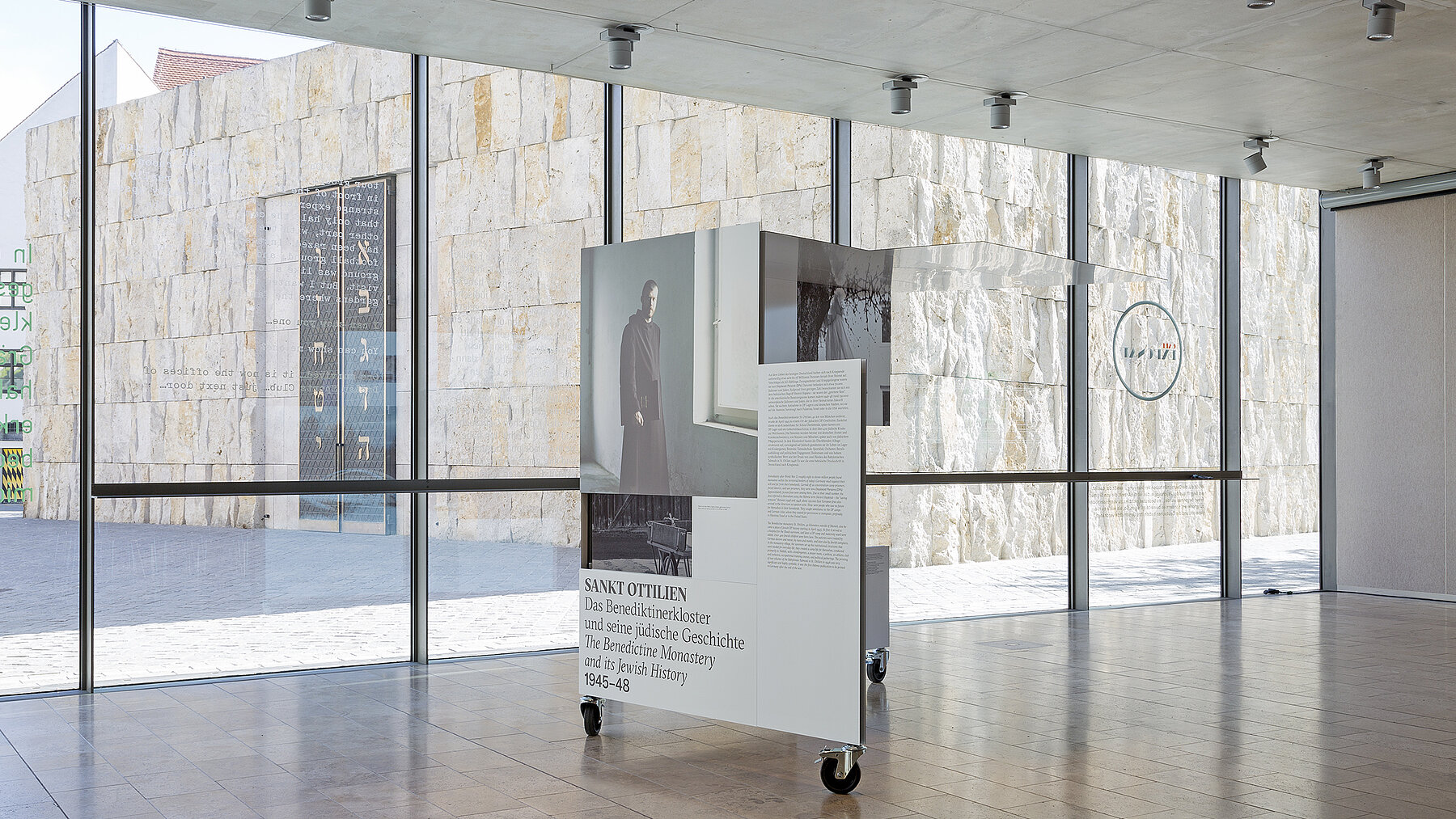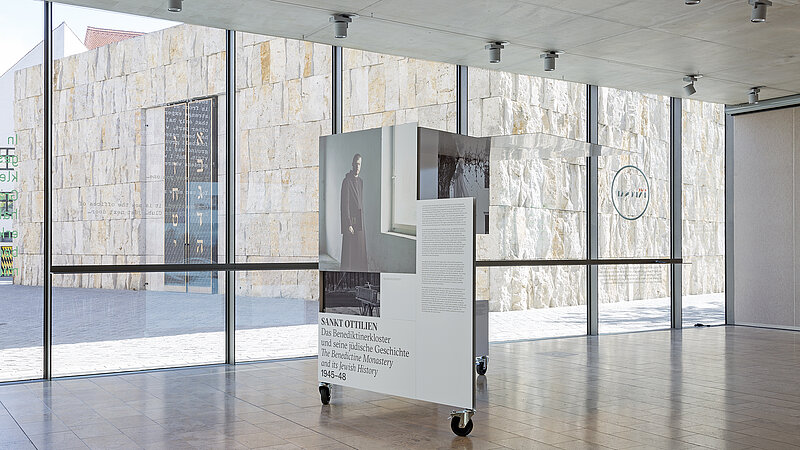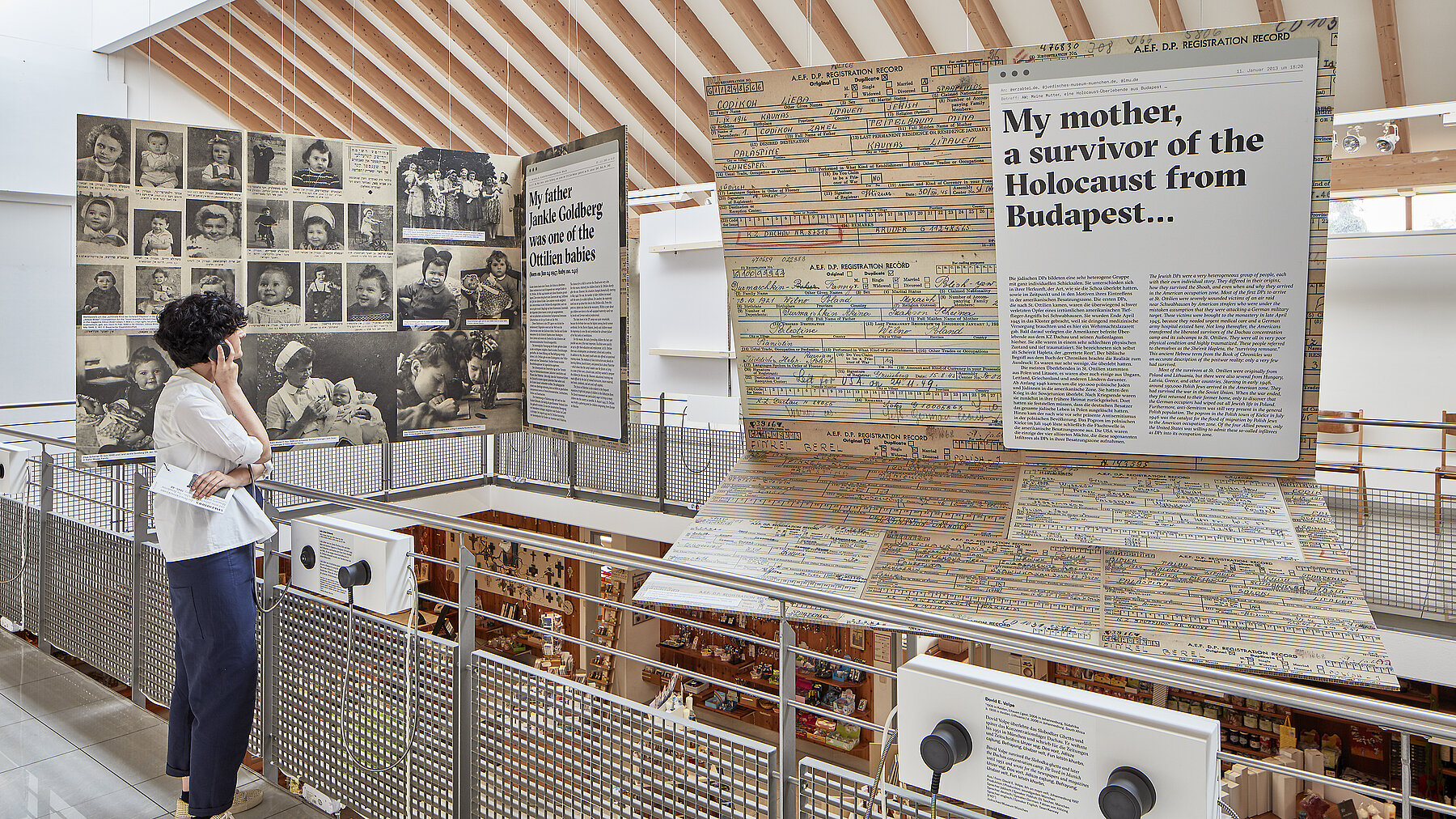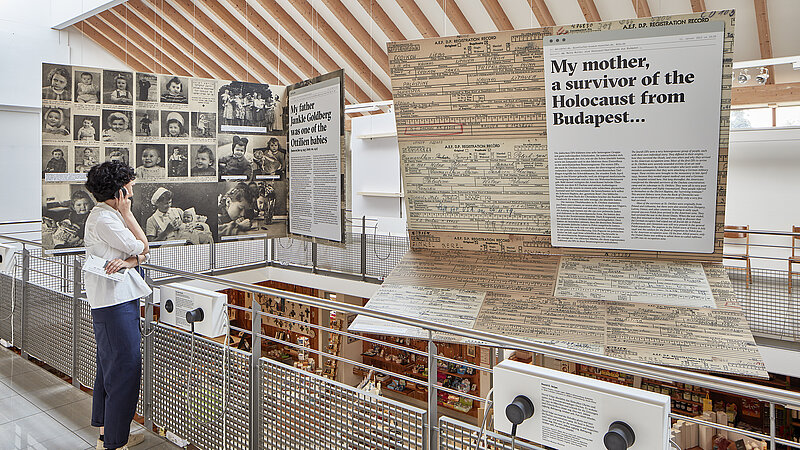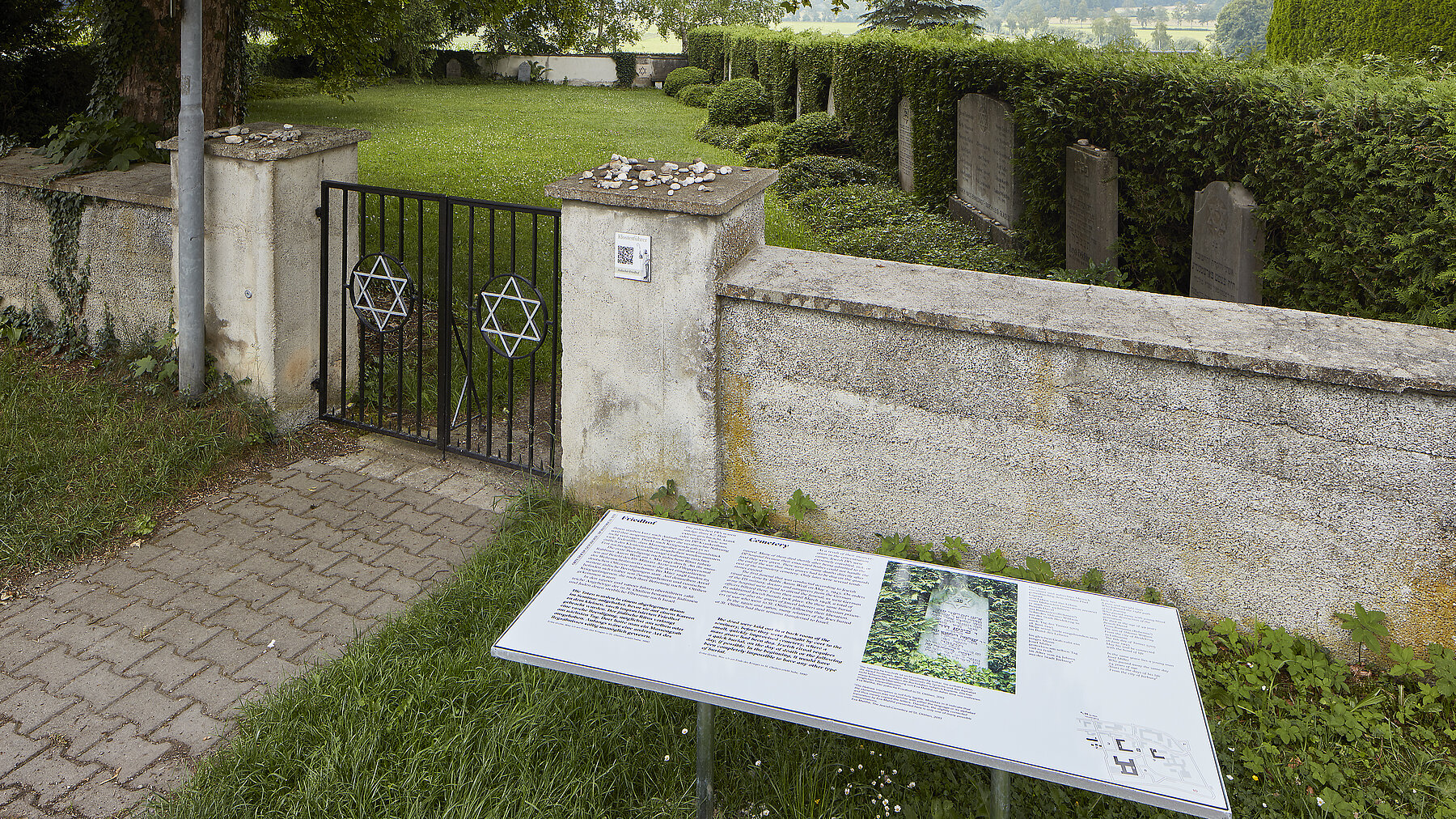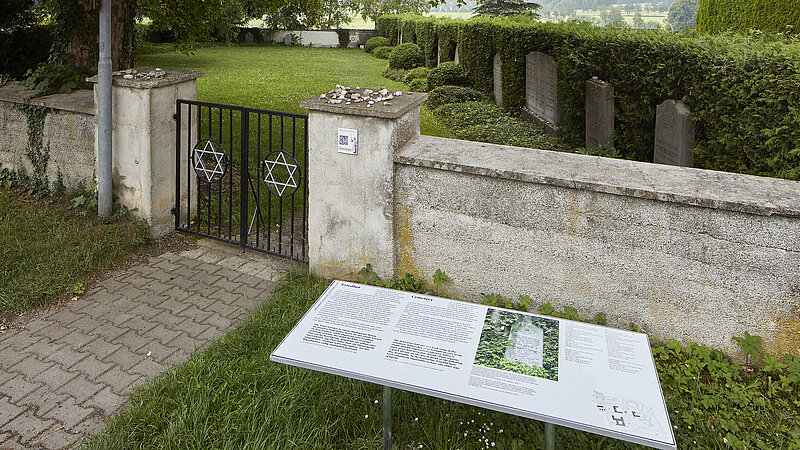Sankt Ottilien
The Benedictine monastery and its Jewish history 1945–48
A project by the Institute of Jewish History and Culture, History Department, Ludwig Maximilian University (LMU), St. Ottilien Archabbey, and the Jewish Museum Munich.
The Yiddish poet Leivick Halpern (known as H. Leivick) wrote that Jewish children and the sound of church bells greeted him upon his arrival at St. Ottilien in the spring of 1946. Between the years 1945 and 1948, the monastery of the Missionary Benedictines was an involuntary destination for more than 5,000 Jewish survivors from Eastern Europe. Behind these people lay the atrocious experiences of the…
Sankt Ottilien
The Benedictine monastery and its Jewish history 1945–48
A project by the Institute of Jewish History and Culture, History Department, Ludwig Maximilian University (LMU), St. Ottilien Archabbey, and the Jewish Museum Munich.
The Yiddish poet Leivick Halpern (known as H. Leivick) wrote that Jewish children and the sound of church bells greeted him upon his arrival at St. Ottilien in the spring of 1946. Between the years 1945 and 1948, the monastery of the Missionary Benedictines was an involuntary destination for more than 5,000 Jewish survivors from Eastern Europe. Behind these people lay the atrocious experiences of the Shoah, ahead of them an uncertain future. St. Ottilien offered them an idyllic setting, well-equipped medical facilities, and an adequate supply of food produced by its own farmlands. It became a place to convalesce and recuperate, but also to wait and hope. The three-year history of the Jewish presence at the Catholic monastery began in late April 1945 when the Allies bombed what they thought was a German military transport train that, unbeknownst to them, was full of trapped Jewish concentration camp prisoners being shipped from the Kaufering satellite camps. The injured survivors of that attack were brought to the German military hospital that had existed at St. Ottilien since 1941, where about a thousand German soldiers were also being treated at the time.
Civilians who found themselves outside their home countries because of the war were labeled Displaced Persons (DP) by the Allied armed forces. Gradually, St. Ottilien developed into a Jewish DP hospital that in cluded a DP camp and a maternity ward, in which more than 400 Jewish children were born. The patients and convalescents were under the care of German doctors and nurses, nuns and monks, and also an increasing number of Jewish caregivers. The survivors quickly set up the institutional structures, conducted primarily in Yiddish, that were needed for everyday life: a prayer room, a kindergarten and yeshiva, a kosher kitchen, athletic and chess clubs, occupational training courses, and political parties. The camp orchestra of St. Ottilien became famous and performed at the DP camps throughout the American occupational zone. At the same time, the first medical director of the hospital, Dr. Zalman Grinberg, became one of the leading figures of the Jewish self-administration in Bavaria.
In the summer of 1945, the monastery, which the National Socialists had confiscated years before, was turned back over to the Benedictine Order. Gradually, monks returned from their forced labor and military service assignments. But the situation that they faced upon their return was not an easy one: housing was in short supply and exercising religious duties was difficult to the point that conflict with the American military government, Jewish self-administration, and international relief organizations became nearly inevitable.
This unique time immediately after the war was characterized by the encounter of religions, the interaction between the Jewish DPs and the local German population, and the rhythm of daily life at the DP hospital and camp. Until now, this has been a littleknown chapter in the history of the monastery, but in 2018 it is the focus of a varied program of activities.
Duration of exhibition
May 13 - September 23, 2018
Where
Foyer
Curator
Assistance
Conception und realization Evita Wiecki (LMU) Jutta Fleckenstein (Jüdisches Museum München) Pater Cyrill Schäfer (Erzabtei Sankt Ottilien) Participation: Marie Wallis Research:Carolin Piorun Julia Schneidawind Mirjam Spandri Lara Theobalt Jakob Liebig
Architecture
Lendler Ausstellungsarchitektur, Berlin
Program
Installation at the Jewish Museum Munich featuring work by the Israeli artist Benyamin Reich, Berlin
In connection with International Museum Day 2018 and its theme »Hyperconnected Museums: New Approaches, New Publics,« the Jewish Museum Munich presents an installation that will send visitors on an exploratory tour of the Benedictine monastery as seen from a new, namely Jewish, perspective.
Location: Jewish Museum Munich
Opening on International Museum Day with guided tours:
May 13, 2018
More information at www.museumstag.de
Dates: May 13, 2018 – September 23, 2018
Exhibition and Tour at St. Ottilien
New outdoor signs which can be found throughout the monastery grounds indicate how the church property was used as a Jewish Displaced Persons hospital and camp. The exhibition in the gallery of the monastery shop expands upon certain aspects of St. Ottilien’s history in the period from 1945 to 1948.
Location: Gallery of the monastery shop, St. Ottilien
Opening: June 10, 2018, at 2 p.m.
Dates: June 10 – September 23, 2018
The arrangement of dates for guided tours of the monastery grounds and the gallery exhibition is possible:
Meeting point: information board at the parking lot/restaurant.
Duration: 90 minutes.
Registration mandatory: fuehrungen.jmm(at)muenchen.de or
by phone +49 89 288 516 423
Symposium
An international symposium will take place at St. Ottilien on June 10–12, 2018, that will turn scholarly attention to major aspects of DP history at the St. Ottilien monastery. In addition to the history of the hospital itself (starting in 1941), other topics on the symposium’s agenda will include the biographies of notable individuals, the communal life shared by the various groups, the daily life in the DP camp, the religious and cultural life of Jews at St. Ottilien, and the paths of migration and personal histories of children.
Program: www.sankt-ottilien.org
Information, contact: evita.wiecki(at)lrz.uni-muenchen.de
Concert
The series of events will conclude with a concert held at the historic location to commemorate the liberation concert performed by survivors in May 1945 at St. Ottilien. This concert will feature a guest performance by the solo violinist Anne-Sophie Mutter.
Location: St. Ottilien Archabbey of the Missionary Benedictines
Date: September 23, 2018, 3 p.m. (start of Sukkot)
Tickets and information at: www.ammerseerenade.de and info(at)ammerseerenade.de.
Impressum
A project by the Institute of Jewish History and Culture, History Department, Ludwig Maximilian University (LMU), St. Ottilien Archabbey, and the Jewish Museum Munich
Under the patronage of Charlotte Knobloch, President of the Jewish Community of Munich and Upper Bavaria Concept and Project Management: Evita Wiecki (LMU), Jutta Fleckenstein (Jewish Museum Munich), Father Cyrill Schäfer (St. Ottilien Archabbey)
Assistance: Marie Wallis
Research: Carolin Piorun, Julia Schneidawind, Mirjam Spandri, Lara Theobalt and Jakob Liebig
Translation: Dona Geyer
Exhibition Design: Lendler Ausstellungsarchitektur, Berlin
Exhibition Setup: Sabine Menges
Graphic Design: Rimini Berlin

